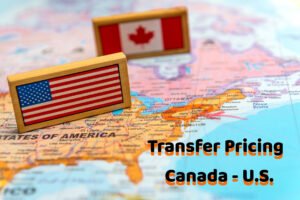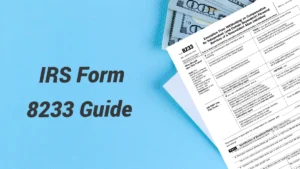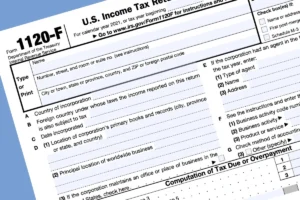Taxes may not be the most exciting part of running an online business, but they’re essential. With e-commerce sales in Canada projected to rise from $62.12 billion in 2023 to $94.14 billion by 2027, tax compliance is key to success.
So, what taxes do e-commerce businesses pay in Canada? You’re generally responsible for income tax, GST/HST returns, PST (if applicable), and cross-border taxes. That’s why we created this guide to simplify tax compliance for Shopify, Amazon, and dropshipping businesses.
Need expert guidance? SAL Accounting’s tax specialists can streamline the process—reach out today!
Quick Takeaways
- Get to know GST, PST, and HST so your business follows the right tax rules in each province.
- Use tools like the CRA’s My Business Account to make tax filing easier and stay on top of deadlines.
- Staying tax-compliant helps you avoid penalties and keeps your e-commerce business running smoothly.
Understanding the Types of E-Commerce Taxes in Canada
There are a few different types, and before addressing compliance, you need to know the taxes that apply to Canadian e-commerce businesses. Here’s a breakdown:
Income Tax for Online Sellers
E-commerce business owners in Canada, whether full-time or side hustle earners, must declare their income to the Canada Revenue Agency (CRA). Many other income tax obligations differ depending on whether you operate as a sole proprietor, partnership, or corporation.
➜ Read More: Best Bookkeeping Tools for Small Business Owners
Federal vs. Provincial Taxes
There is a federal income tax and a provincial income tax. At the federal level, rates are progressive from 15% to 33% as you earn more income. Provincial rates vary considerably — Ontario’s top rate is %13.16, Quebec’s is %25.75.
| Province/Territory | Federal Tax Rate (2024) | Provincial Tax Rate (2024) |
| Ontario | 15% – 33% | 5.05% – 13.16% |
| Quebec | 15% – 33% | 15% – 25.75% |
| Alberta | 15% – 33% | 10% |
| British Columbia | 15% – 33% | 5.06% – 20.5% |
| Manitoba | 15% – 33% | 10.8% – 17.4% |
| Saskatchewan | 15% – 33% | 10.5% – 14.5% |
| Nova Scotia | 15% – 33% | 8.79% – 21% |
| New Brunswick | 15% – 33% | 9.4% – 20.3% |
| Newfoundland & Labrador | 15% – 33% | 8.7% – 18.3% |
| Prince Edward Island | 15% – 33% | 9.8% – 16.7% |
| Northwest Territories | 15% – 33% | 5.9% – 14.05% |
| Yukon | 15% – 33% | 6.4% – 15% |
| Nunavut | 15% – 33% | 4% – 11.5% |
Example Calculation:
If your e-commerce business earns $50,000 in taxable income per year:
- Federal tax at 15% = $7,500
- Provincial tax in Ontario at 10.98% = $5,490
Total income tax = $12,990
GST/HST for E-Commerce in Canada
Understanding Goods and Services Tax (GST) and Harmonized Sales Tax (HST) in Canada is essential for your e-commerce business to ensure compliance and proper tax management.. This tax is levied on most goods and services. As a business owner, you need to know your compliance obligations with regard to registration, collection, and remittance.
What Is GST/HST?
GST is a federal 5% consumption tax on most goods and services. In certain provinces of Canada, like Ontario, New Brunswick, and Nova Scotia, HST is GST that is combined with provincial sales taxes.
Who Needs to Register?
Businesses making over $30,000/yr are required to register for a GST/HST account with the CRA.
How to Charge and Remit GST/HST
- Include GST/HST in your prices according to your customers’ province.
- Charge the tax when customers buy.
- You send the amount collected to the CRA minus any input tax credits on business expenses.
Example:
A Shopify store sells a $100 product to a customer in Ontario (13% HST):
- Price + HST = $100 + (13% of $100) = $113
- Remit $13 to the CRA.
➜ Read More: GST/HST Return in Canada Guide
Provincial Sales Tax (PST)
Not every province uses HST. Others, such as British Columbia (7%), Manitoba (7%), and Saskatchewan (6%), levy a Provincial Sales Tax (PST) on some goods and services. It’s crucial to know the rules and understand when to charge PST instead of GST/HST.
Example:
So, if you’re selling something for $200 in British Columbia, your PST would be 7%:
- Price with PST = $200 + (7% of $200) = $214
If the sale were in a province like Alberta, which only charges GST (5%), the price would be lower:
- Price with GST = $200 + (5% of $200) = $210
Quebec Sales Tax (QST)
Quebec, for example, has its own sales tax called the Quebec Sales Tax (QST), which is 9.975%. The goods and services tax (GST) is charged on most goods and services sold in the province. Unlike the GST/HST, the QST falls under the jurisdiction of Quebec’s tax authority, Revenu Québec. If a business meets the threshold to be considered as carrying on commercial activities in Quebec, it must register for QST.
Example:
If you’re selling an item for $200 in Quebec, the QST would be 9.975%:
- Price with QST = $200 + (9.975% of $200) = $219.95
It’s important to note that while the GST and QST are separate taxes, both often apply to the same transaction, and businesses are required to collect and remit them accordingly. Familiarizing yourself with the rules around QST collection is essential for compliance when operating in Quebec.
Import/Export Duties
As you engage in international trade, import and export duties become essential factors to consider. These duties are taxes placed on goods when they enter or leave a country. In Canada, the rate of duty is based on
- the nature of the goods
- their country of origin
- and the associated trade agreements, e.g., CUSMA (Canada-United States-Mexico Agreement).
Businesses need to classify their goods correctly using the right Harmonized System (HS) code to avoid incorrect duty charges. Misclassification can lead to penalties, increased scrutiny, or shipment delays due to violations of import/export duty regulations.
Corporate Income Tax
Corporate income tax is a key component of business in Canada. Corporate taxes are levied by both the federal and provincial governments, and rates and rules vary based on the location and type of business.
Corporate income is subject to a federal corporate income tax rate of broadly 15%, and rates differ by province; for example, Quebec levies an additional 11.5% corporate tax. Small businesses have the option to pay a lower small business tax rate, which specifically applies to companies making money up to a certain amount.
➜ Read More: Corporate Tax Deadlines in 2025
Tax Compliance Steps for E-Commerce Businesses
If you run an e-commerce business, you might already know that when it comes to tax regulations, there is no room for error. However, as each province or territory can have its own rules for taxation (and may charge different rates), it is crucial to be aware of and correctly apply the taxation that applies to your transactions. The steps below will help you to stay compliant with sales tax obligations across Canada.
Step 1: Register Your Business for Taxes
Before you start collecting taxes, you need to register your business with the CRA. Here’s how:
- Visit the CRA’s Business Registration Online portal.
- Register for your business number and open tax accounts for GST/HST, PST (if applicable), and income tax.
Step 2: Keep Records and File Online Business Taxes in Canada
If you want to learn how to pay taxes for online businesses in Canada, this part is for you. Accurate records are your best defense against audits. Keep track of:
- Sales (by location and tax rate)
- Expenses (such as supplies, shipping, and marketing)
- Tax remittances
Use software like QuickBooks or Xero to automate tracking and generate reports easily.
Step 3: Consider Cross-Border Sales and Taxes
E-commerce businesses selling to US customers need to consider cross-border tax rules for interstate commerce. For example:
- Amazon FBA tax rules in Canada must be taken seriously and sellers may need to collect and remit sales tax in states where they store inventory.
- Platforms like TaxJar or Avalara can simplify multi-state compliance.
Step 4: Charge Taxes on Shopify, Amazon, Etsy, eBay, and WooCommerce
If you’re selling on platforms such as Shopify, Amazon, Etsy, eBay, or WooCommerce, it’s important to know how to charge and collect taxes properly. Each of these platforms offers its tools and settings to help sellers streamline tax calculations based on the rules in the region where sales happen:
1. Shopify
Shopify has an automated tax feature that provides taxes by your store’s location and your customers’ areas. You can configure tax rates for specific countries, states, or provinces, ensuring compliance with local tax laws. You can also visit our services for Shopify accounting in Toronto.
2. Amazon
Amazon’s Marketplace Tax Collection (MTC) system manages sales tax collection for sellers in specific regions. Sellers may have to customize their tax settings for other states and may also have to check that their account accurately reflects the appropriate rates to charge. Do not forget to get free consultancy about bookkeeping for Amazon sellers.
3. Etsy
Etsy automatically collects and remits sales tax in states where that is legally required from US-based sellers. If you are selling internationally, you may have to look into whether others manage VAT or GST compliance, depending on where you live. Read more about our services for Etsy sellers’ bookkeeping too.
4. eBay
Orders in many regions have applicable taxes, like sales tax (or VAT), collected and remitted by eBay. Thus, sellers must track and report off-automated-collection taxes.
5. WooCommerce
It provides sellers with the option to set up their own tax rules or accept plugins for tax calculation and collection (e.g. TaxJar or Avalara) so sellers can collect VAT and GST in addition.
Sellers can use these platforms’ tax management tools to simplify compliance and minimize the chance of making mistakes or facing fines. Make sure to keep track of tax law updates so configuration can be done accordingly to ensure the best possible efficiency and accuracy.
How to Reduce Tax Liability for Your Online Business
One big strategy for getting the most out of your internet business is minimizing tax liability. Knowing what deductions you have available, what accounting practices you should embrace, and how to stay tax-compliant can lower taxes and keep your business finances together.
Best Tax Deductions for E-Commerce Businesses
Claim all eligible deductions to lower your taxable income. Common deductions include:
- Inventory costs
- Shipping and packaging fees
- Website hosting and email platforms
- Advertising spend
- Home office expenses (if you work from home)
Pro Tip: Don’t overlook professional development expenses, like attending online business courses or subscribing to e-commerce trade publications.
Strategic Timing of Business Expenses
Plan larger business expenditures strategically. For example:
- If you’re having a higher-earning year, stock up on inventory before the fiscal year ends to maximize deductions.
Using Professional Tax Advice
Professionals like SAL Accounting specialize in optimizing tax strategies for online businesses. They can help with:
- Identifying overlooked deductions.
- Preparing tax returns.
- Strategic planning to reduce your liability in the future.
5 Tips for Staying Tax Compliant & Saving Time
- Automate Taxes: If you’re using e-commerce solutions like Shopify and WooCommerce, they have plugins that calculate taxes automatically.
- Keep Records for Six Years: CRA audits require detailed records going back up to six years.
- Always File on Time: No one wants to incur big penalties—so pay taxes quarterly or monthly depending on your revenue.
- Stay on Top of Tax Rules: Keep an eye on the tax adjustments—especially if you sell across borders.
- Hire a Certified Professional Accountant (CPA): A tax professional can identify deductions and ensure you’re in full compliance with the regulations.
🌟 Pro Tip: Incorrect filings can result in interest charges. Double-check all calculations or hire an expert to avoid costly errors.
➜ Read More: 6 E-Commerce Accounting Errors That Could Cost You Thousands
Case Study: How SAL Accounting Helped Emma Stay Tax-Compliant
The Problem: When I first spoke with Emma, she was drowning in tax stress. As a small business owner running a Shopify store, she was managing sales tax across multiple states—by hand. And let me tell you, manual bookkeeping is a recipe for trouble. She was making errors, racking up penalties, and wasting hours trying to figure it all out.
What We Did: We took a hands-on approach to fix things fast:
- Reviewed Everything: We dug into her books, past tax returns, and compliance issues.
- Automated Her System: Set her up with cloud-based accounting software that actually works for her business.
- Simplified Sales Tax: Designed a custom strategy so she could collect and file taxes without the usual headaches.
- Trained Her Team: Made sure everyone knew how to use the system and stay compliant.
- Kept an Eye on Things: We didn’t just set it and forget it—we continued to support her.
The Result: Emma stopped stressing over tax mistakes and saved thousands in penalties. With an automated system in place, she now has more time to focus on growing her business—without worrying about compliance.
Just like with Emma, we make sure our clients stay ahead of tax issues so they can build their businesses with confidence.
Conclusion
While navigating e-commerce taxes in Canada can feel intimidating, with proper systems and understanding, you can be successful. By keeping compliant and tuning your tax strategy, you’ll stay free of penalties and work towards a thriving, profitable business.
Struggling to make sense of your e-commerce taxes? SAL Accounting does all the work, so compliance becomes painless!
FAQs
Income tax, GST/HST, and PST are the primary taxes applicable to businesses.
Federal taxes apply nationwide, while provincial taxes vary by location. For example, Alberta doesn’t impose PST, while British Columbia charges 7%.
Yes, small businesses must pay income tax based on their profitability and sales taxes if they exceed the $30,000 revenue threshold.
Sales tax rates vary by province, from 5% GST in Alberta to as high as 15% HST in Nova Scotia.
Income and sales taxes can be filed online through the CRA’s My Business Account.
The general deadline for filing personal income taxes in Canada is April 30. For self-employed individuals and their spouses or common-law partners, the deadline is June 15, but any taxes owed must still be paid by April 30 to avoid penalties.




